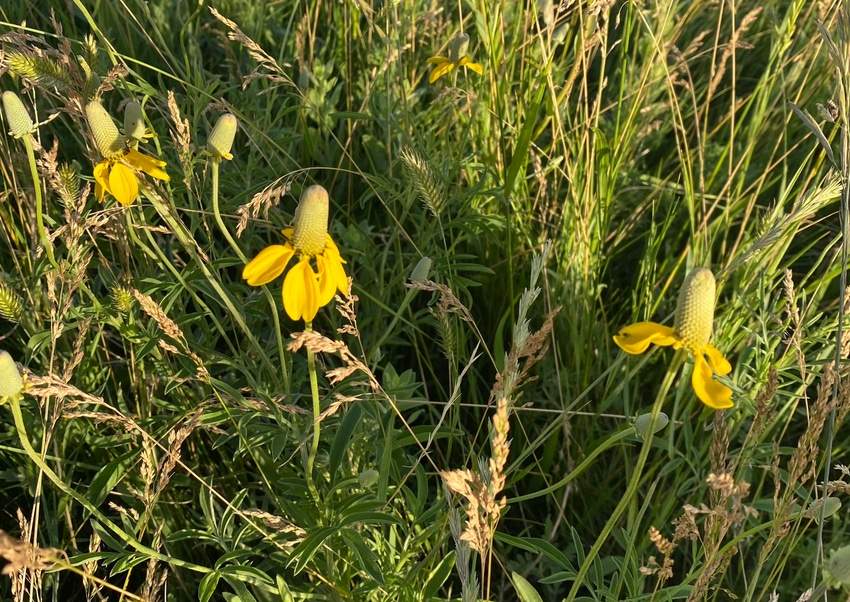Yellowstone TV a reminder of our shared love of the land
Our pastures are home to more than just cattle. Ranchers have a strong story of environmental stewardship to share.
June 22, 2020

The third season of the popular western television drama, Yellowstone, aired on the Paramount channel over the weekend.
While the morality of some of these cowboys depicted on the big screen may be a little less than the ranchers I know and love in real life, the Yellowstone series portrays our agricultural life in a way that is connecting with urban and rural viewers alike.
In one scene, one of the main characters, the patriarch of the ranch, John Dutton, played by Kevin Costner, has a conversation about the challenges of ranching with his grandson, Tate.
He describes the politics at play—the taxes; the burdensome regulations; the battle between man and nature; the market swings; and the uncertainty of it all.
His grandson asks him, “If ranching is so hard, why do we do it?”
To which John Dutton replies, “Because it’s one hell of a life.”
And while cattle are a major part of the show — viewers can enjoy scenes of branding, cattle drives, calving and more — the true center of Yellowstone is the land.
Each episode presents the dynamic of competing neighbors, outside parties and politicians in the battle for a finite resource — the land.
Of the land, John Dutton says, “If someone had all the money in the world, this [land] is what they would buy. “
As stewards of the land, at our core as ranchers, we are primarily grass farmers harvesting our forages through bovine animals. Whether it’s hay, grass, forage residues, cover crops or other by-products of farming, cattle are up-cyclers of these feedstuffs and convert this cellulosic material that is inedible by humans into nutrient-dense beef and life-enriching by-products.
As land managers, there’s a great deal to learn about every pasture and every field, and although you might think you know everything about every acre on your ground, I challenge you to look at it from a fresh perspective.
Let me give you an example. If you have kids or grandkids, what do you think they see when they look at the pasture?
My guess is they see a bunch of green grass and grazing cattle.
Now challenge them to look closer.
Our pastures are a rich eco-system abundant with life — from hundreds of species of birds, to fox, rabbits, field mice, gophers, prairie dogs, grouse, bugs, butterflies, bees, coyotes, badgers and more.
On top of that, our prairie grasslands are home to a variety of grass and wildflower plants. Some of these drought-resilient plants have roots that grow many feet below the surface of the soil.
Of course, there are the things we can’t see — the tiny micro-organisms, the decaying animals and plants embedded in the multiple layers of healthy soil.
And this amazing ecosystem remains intact through responsible grazing and managing ruminant animals on the land to live in concert with the wildlife that also call this place home.
The other day, the kids were along with me while I was chopping thistles, and we began to have this conversation. It was then that I realized how rich this story truly is. I watched as the pasture came to life in their eyes. When we returned home from our work, I quickly pulled out field guides from the office, so they could begin to identify plants, forbs and flowers that we photographed in the pasture. As they identified different varieties, I realized that even though I’ve lived here my whole life, I still have much to learn about this incredible land that I call home.
This story has power. This story has meaning. I’m certain we can relate to John Dutton and his strong passion and connection to the land. I’m guessing our consumers would also like to feel more connected to the land, and in turn, they’ll be more connected to their food, as well.
Let’s highlight the incredible stories of our beautiful pastures and fields, our healthy soils and the abundance of wildlife that reside on our acres of land. And then let’s show our consumers how well-managed livestock work so harmoniously in the big picture to aerate the soil, fertilize the land, recycle the water and upcycle forages.
It’s a beautiful picture indeed; now let’s go out and paint it for others to enjoy, as well.
The opinions of Amanda Radke are not necessarily those of beefmagazine.com or Farm Progress.
About the Author(s)
You May Also Like




.png?width=300&auto=webp&quality=80&disable=upscale)
